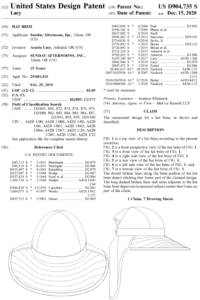After developing a novel product, it can be frustrating to see others copying your product and selling it online, often at cheaper price points and inferior quality. Sales by others who copied your product may take away market share and associate your unique product with poor quality materials and workmanship.
Even assuming you have already invested in your intellectual property (IP) by obtaining a patent, enforcing the patent has its own costs. A lawsuit for patent infringement typically costs millions of dollars. For many, enforcement through patent litigation is not feasible.
An alternative option may be to submit a take-down request directly with the online retailer. Common retailers such as Amazon and eBay each have their own internal methods of enforcing intellectual property infringement on their platforms. Submitting a take-down request to the retailer, rather than initiating an enforcement action directly against the infringer, can be a great solution for enforcing your patent rights without resorting to lengthy and costly legal battles.
For example, Amazon has two different avenues for protecting patent rights: a limited, free option and an option using a neutral evaluator that requires an up-front fee.
For the free option, a report is submitted through Amazon’s Report Infringement form. This relatively simple process involves entering basic information about the relevant patent, the owner of the patent, and the Amazon listing that infringes the patent. Once submitted, the listing does not get removed automatically. Amazon notifies the seller and reviews the information you submitted, and may take down the listing after review. However, review through the Report Infringement form is limited, and Amazon will not take down a listing if it is unable to determine that the accused product is infringing.
For more in-depth review, Amazon provides a process called Amazon Patent Evaluation Express Procedure (APEX). APEX uses a neutral evaluator to determine whether a product listed on Amazon infringes a patent. To participate in this program, you must first enroll in Amazon Brand Registry and submit a request. The seller is notified and must also agree to participate. Both you and the seller must submit a $4,000 payment. At the conclusion, the prevailing party will have their payment returned. While there is cost associated with this program, it is far less than typically spent in litigation, and many find it worthwhile to have a neutral attorney evaluate their claim.
Overall, takedown requests are a valuable tool in the arsenal of patent holders, enabling them to swiftly address instances of infringement and protect their intellectual property rights. Stay tuned for evaluation of other common retailer’s processes, and notes on how they differ in several key areas. At McCoy Russell LLP, we commonly assist individuals and businesses with navigating takedown requests directly with retailers, and we take pride in helping our clients achieve favorable outcomes.












Recent Comments